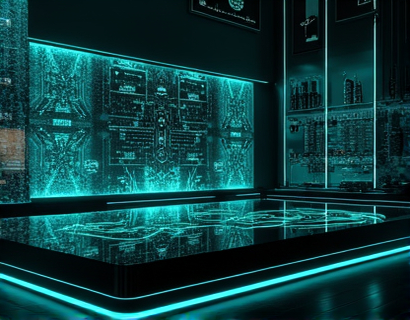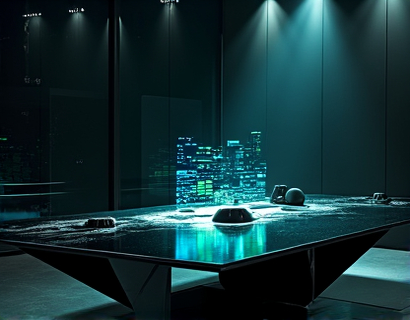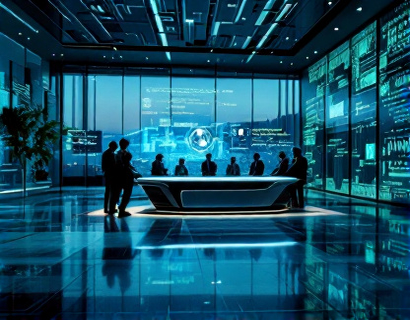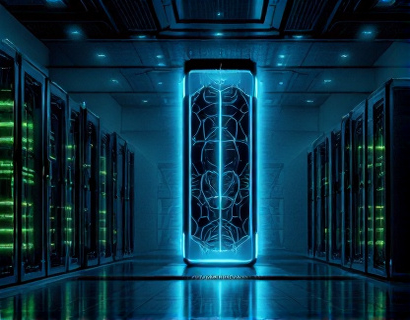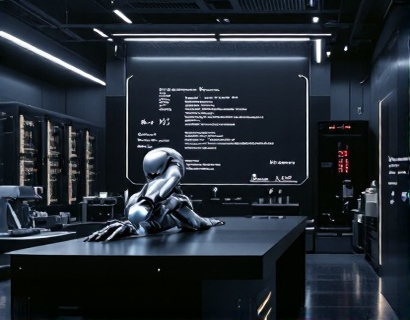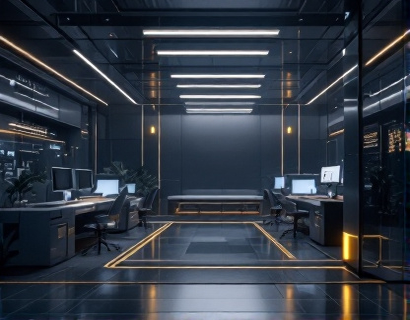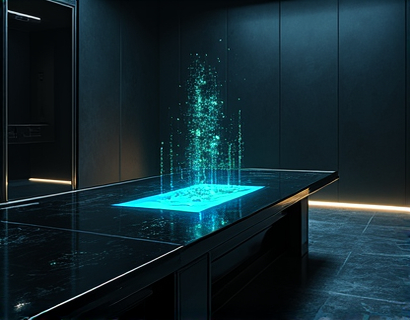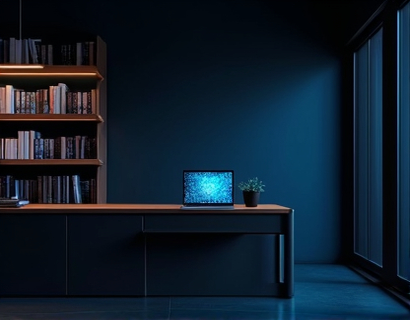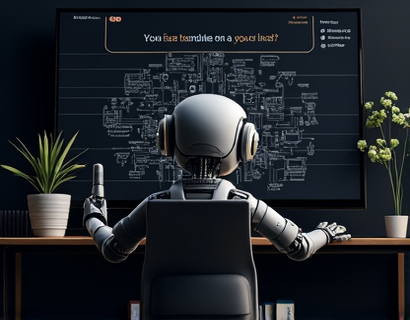Revolutionizing Event Audio-Visual Control with Advanced Hardware Solutions
In the dynamic world of event planning and production, the ability to deliver a captivating audio-visual experience is paramount. The integration of cutting-edge lighting and sound hardware solutions, coupled with sophisticated hardware management software, can significantly elevate the quality and impact of any event. This article delves into the transformative potential of these advanced technologies, focusing on how they can streamline control, enhance performance, and ensure seamless execution.
The Importance of Advanced Audio-Visual Control
The success of any event hinges on the seamless coordination of various elements, with audio-visual components playing a crucial role. Lighting and sound systems are not just background elements; they are integral to setting the mood, enhancing the atmosphere, and engaging the audience. Traditional methods of managing these systems can be cumbersome, prone to errors, and challenging to coordinate. The introduction of advanced hardware management software changes this paradigm, offering a robust solution that simplifies control and maximizes the audio-visual impact.
Streamlining Lighting and Sound Systems
Advanced hardware management software is designed to integrate various lighting and sound devices into a unified system. This integration allows for centralized control, reducing the complexity of managing multiple devices from different manufacturers. With a single interface, event planners and production managers can adjust settings, create sequences, and monitor performance in real-time. This level of control ensures that every aspect of the audio-visual presentation is finely tuned to achieve the desired effect.
Centralized Control Interface
The heart of any advanced audio-visual management system is its control interface. Modern solutions offer intuitive and user-friendly dashboards that provide a comprehensive overview of all connected devices. These interfaces support touch-based operations, making it easy to make adjustments on the fly. Whether it's dimming lights for a dramatic effect or adjusting sound levels to optimize dialogue clarity, the control is precise and immediate. This real-time control capability is crucial for maintaining the flow and pacing of the event.
Enhancing Performance Reliability
Reliability is a key factor in the success of any event. Advanced hardware management software is engineered to ensure that lighting and sound systems operate flawlessly from start to finish. These systems incorporate robust error detection and correction mechanisms, automatically identifying and resolving issues before they impact the performance. This proactive approach minimizes downtime and ensures that the focus remains on the event's content, not technical glitches.
Redundancy and Fail-Safe Mechanisms
To further enhance reliability, advanced systems often include redundancy and fail-safe features. These features ensure that in the event of a component failure, the system can seamlessly switch to backup devices without interrupting the performance. This level of preparedness is invaluable in high-stakes environments where every second counts. By eliminating the risk of unexpected failures, event planners can confidently deliver a polished and professional experience.
Maximizing Creative Potential
Beyond reliability and ease of use, advanced audio-visual management solutions unlock new levels of creativity. With a powerful and flexible platform, event creators can experiment with innovative lighting and sound designs that push the boundaries of traditional events. The ability to pre-program complex sequences and transitions allows for dynamic and immersive experiences that captivate and engage audiences.
Customizable Scenes and Effects
Modern hardware management software supports the creation of customizable scenes and effects, enabling precise control over every aspect of the audio-visual presentation. Event planners can design intricate light shows that synchronize with music and video content, creating a cohesive and visually stunning experience. Similarly, sound systems can be tailored to enhance specific moments, such as amplifying key speeches or creating atmospheric soundscapes for different segments of the event.
Seamless Integration and Compatibility
One of the most significant advantages of advanced audio-visual management software is its ability to integrate with a wide range of devices and systems. Whether it's LED lights, projectors, sound consoles, or smart stage equipment, these solutions support a broad spectrum of hardware. This compatibility ensures that event planners can leverage their existing investments while benefiting from the enhanced control and efficiency provided by the software.
Plug-and-Play Capabilities
Advanced systems often feature plug-and-play capabilities, simplifying the setup process. Devices can be easily connected to the management system without the need for extensive configuration or technical expertise. This ease of setup not only saves time but also reduces the potential for human error, ensuring that the system is ready to go when needed.
Optimizing Event Workflows
The impact of advanced audio-visual management software extends beyond the technical aspects to the overall event workflow. By streamlining the control and management of lighting and sound systems, these solutions free up valuable time for event planners and production managers. They can focus on other critical elements of the event, such as content creation, audience engagement, and logistical coordination.
Reduced Setup and Teardown Time
Efficient setup and teardown are essential for maintaining tight schedules and minimizing costs. Advanced hardware management software often includes features that facilitate quick and organized setup processes. For instance, pre-defined templates can be loaded to instantly configure the system for a specific type of event, reducing the time required for initial setup. Similarly, automated teardown procedures ensure that the equipment is safely and systematically disassembled, leaving the venue in pristine condition.
Enhancing Audience Engagement
The ultimate goal of any event is to engage and impress the audience. Advanced audio-visual control solutions play a pivotal role in achieving this objective. By providing precise and dynamic control over lighting and sound, event creators can craft experiences that resonate on multiple sensory levels. Interactive elements, such as audience-controlled lighting effects or responsive soundscapes, can further enhance engagement and create memorable moments.
Personalized Experiences
With advanced systems, it's possible to tailor the audio-visual experience to different areas of the venue or even individual sections. This level of customization allows for personalized experiences that cater to diverse audience preferences. For example, different zones can have distinct lighting and sound settings, creating a unique atmosphere in each area. This flexibility ensures that every attendee has an optimal experience, regardless of their location within the venue.
Future-Proofing Event Technology
As technology continues to evolve, it's crucial for event professionals to adopt solutions that are future-proof. Advanced audio-visual management software is designed to adapt to new hardware and emerging technologies, ensuring that investments remain relevant and effective over time. This forward-thinking approach allows event planners to stay ahead of the curve, incorporating the latest innovations without the need for frequent system overhauls.
Scalability and Flexibility
Scalability is another key feature of advanced hardware management solutions. Whether the event is a small intimate gathering or a large-scale production, the software can scale to meet the specific needs of the occasion. This flexibility ensures that the system is both powerful enough to handle complex setups and efficient enough to manage simpler configurations. As events grow or change, the software can adapt seamlessly, providing consistent performance and reliability.
Conclusion
The integration of cutting-edge lighting and sound hardware solutions, combined with advanced hardware management software, represents a significant leap forward in event audio-visual control. These technologies not only streamline operations and enhance performance but also open up new possibilities for creative expression. By embracing these innovations, event planners and production managers can deliver exceptional experiences that leave a lasting impression on audiences. The future of event technology is bright, and those who adopt these advanced solutions will be at the forefront of this exciting evolution.






